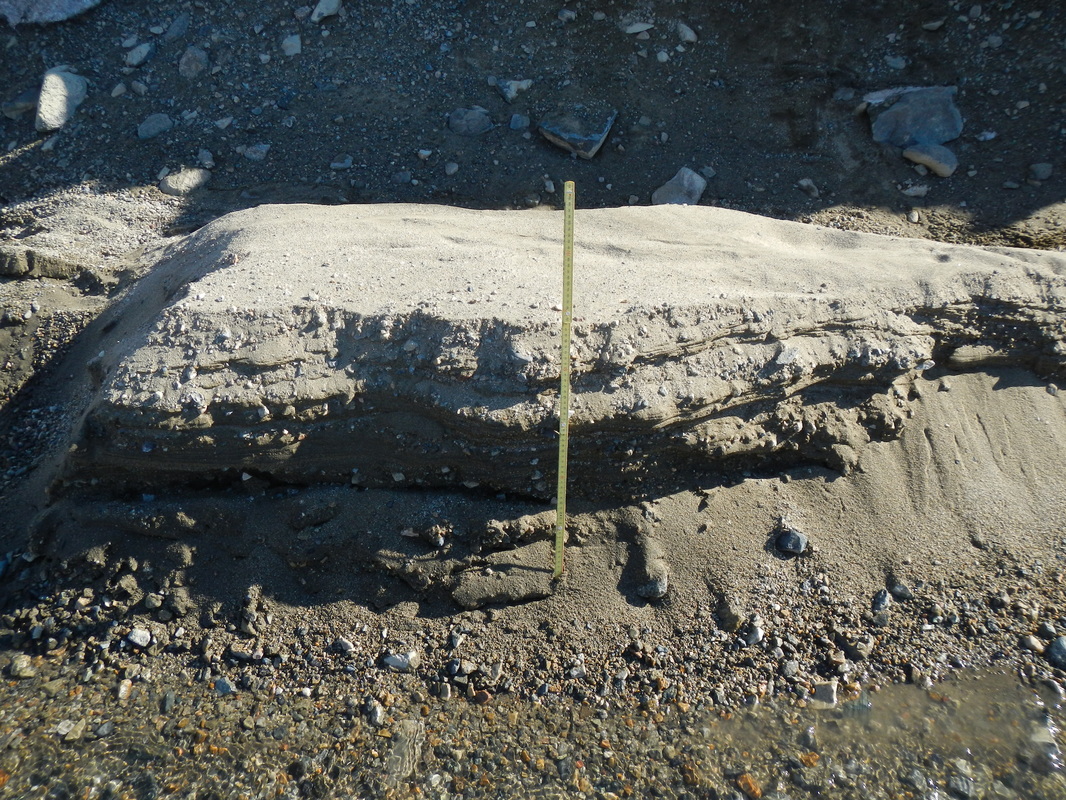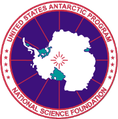Collaborative Research: McMurdo Dry Valleys: A Landscape on the Threshold of Change
|
Project Duration: Sept-2013 - Aug-2016
Principal Investigators: Andrew Fountain (Portland State University) Michael Gooseff Joseph Levy (University of Texas) Dave Van Horn (University of New Mexico) Perched banks after significant downcutting of the channel bed of Crescent Stream (foreground), Taylor Valley, Antarctica.
|
Overview: The landscape of the McMurdo Dry Valleys (MDV) has been undergoing dramatic changes over the past decade. The Wright Lower Glacier in Wright Valley, has deflated tens of meters, the Garwood River in Garwood Valley has incised >3 m through subsurface ice, Canada Glacier in Taylor Valley has formed deep, >4 m canyons, and newly discovered thermokarst slumps have appeared around Taylor Valley streams and lakes. In all cases, these changes are mediated by sediment. Sediment‐free ice exhibits little change. Interestingly, summer air temperatures have been cooling slightly over the past decade but solar radiation has been dramatically increasing at a rate of about 2W m‐2yr‐1 for the past two decades.
We hypothesize that surface sediment in the valleys is warming due to increased solar radiation and more than offsetting minor increasing heat losses due to turbulent exchange with the atmosphere. Where ice is in contact with sediments, rapid surface and subsurface melting is occurring causing extensive and dramatic landscape change. Changes to the geology and hydrology of the landscape driven by near‐surface melting have significant geochemical and biological repercussions in the water‐limited ecosystem of the MDV. We contend that increased solar radiation over the past decades mimic the anticipated climate warming expected in the coming decades to the MDV and can therefore be used as a predictive estimate of future landscape changes. |
|
Graduate Students supported on this project:
|
Postdoctoral Researcher supported on this project:
|
Published Results from this Project (* indicates student lead author)
- Fountain, AG, JS Levy, MN Gooseff, and D Van Horn. 2014. The McMurdo Dry Valleys: A landscape on the threshold of change. Geomorphology, 225: 25-35.
- Gooseff, MN, D Van Horn, Z Sudman, DM McKnight, KA Welch, and WB Lyons. 2016. Stream biogeochemical and suspended sediment responses to permafrost degradation in stream banks in Taylor Valley, Antarctica. Biogeosciences, 13, 1723-1732, doi:10.5194/bg-13-1723-2016.
Conference Presentations from this Project
- *Sudman, Z., MN Gooseff. 2015. Impacts of Permafrost Degradation on Stream Geomorphology and Sediment Transport in Taylor Valley. American Geophysical Union Fall Meeting 2015, (GC23J-1226)
- Gooseff, MN, D VanHorn, D McKnight, K Welch, and WB Lyons. 2014. Implications to Aquatic Ecosystems from Thermokarst on Previously Stable Streambanks in Taylor Valley, Antarctica. THAW 2014 - THermokarst Aquatic ecosystems Workshop: Freshwater ecosystems in changing permafrost landscapes, Quebec City, Canada (March).
Theses/Dissertations from this Project
- Sudman, Z. 2015. Impacts of thermokarst activity on a stream in the McMurdo Dry Valleys. MS Thesis, Department of Civil & Environmental Engineering, Colorado State University.
|
This project is funded through the National Science Foundation's Division of Polar Programs.
This material is based upon work supported by the National Science Foundation under Grant No. 1601000. Any opinions, findings, and conclusions or recommendations expressed in this material are those of the author(s) and do not necessarily reflect the views of the National Science Foundation. |

